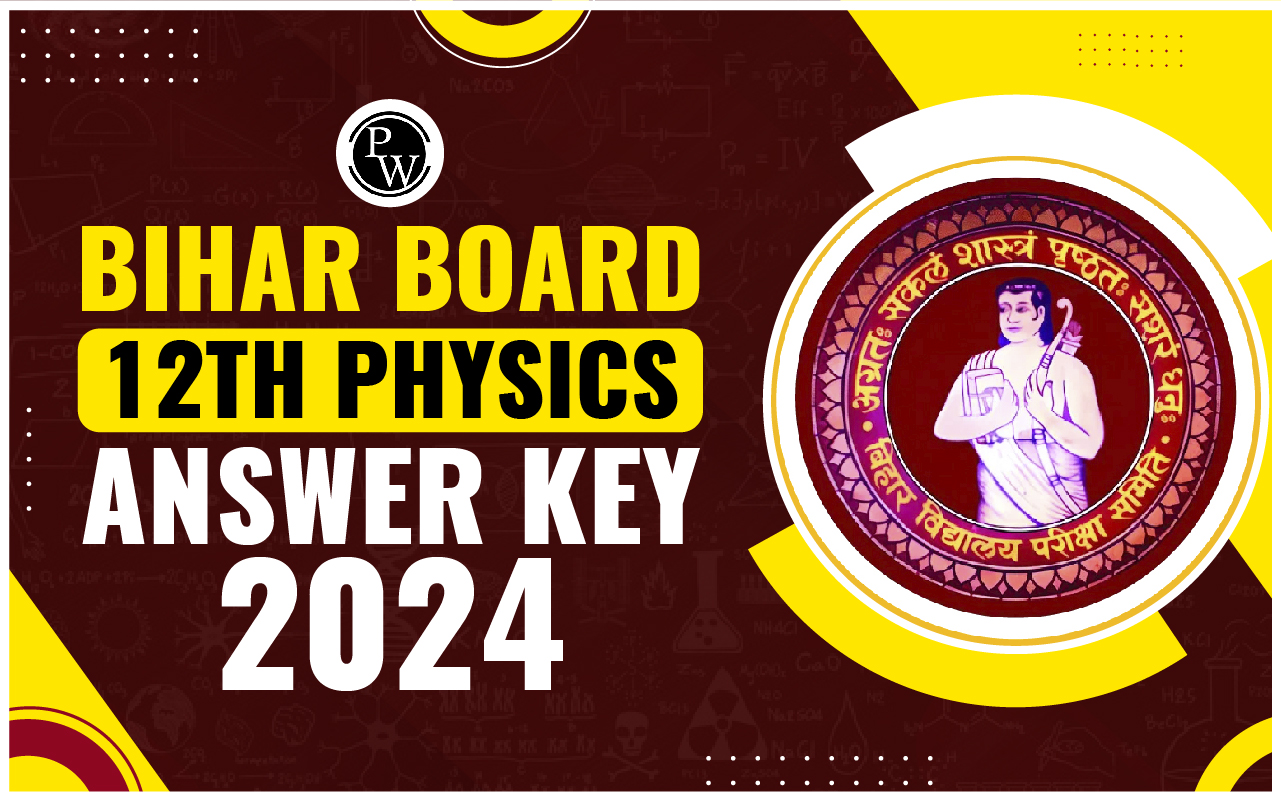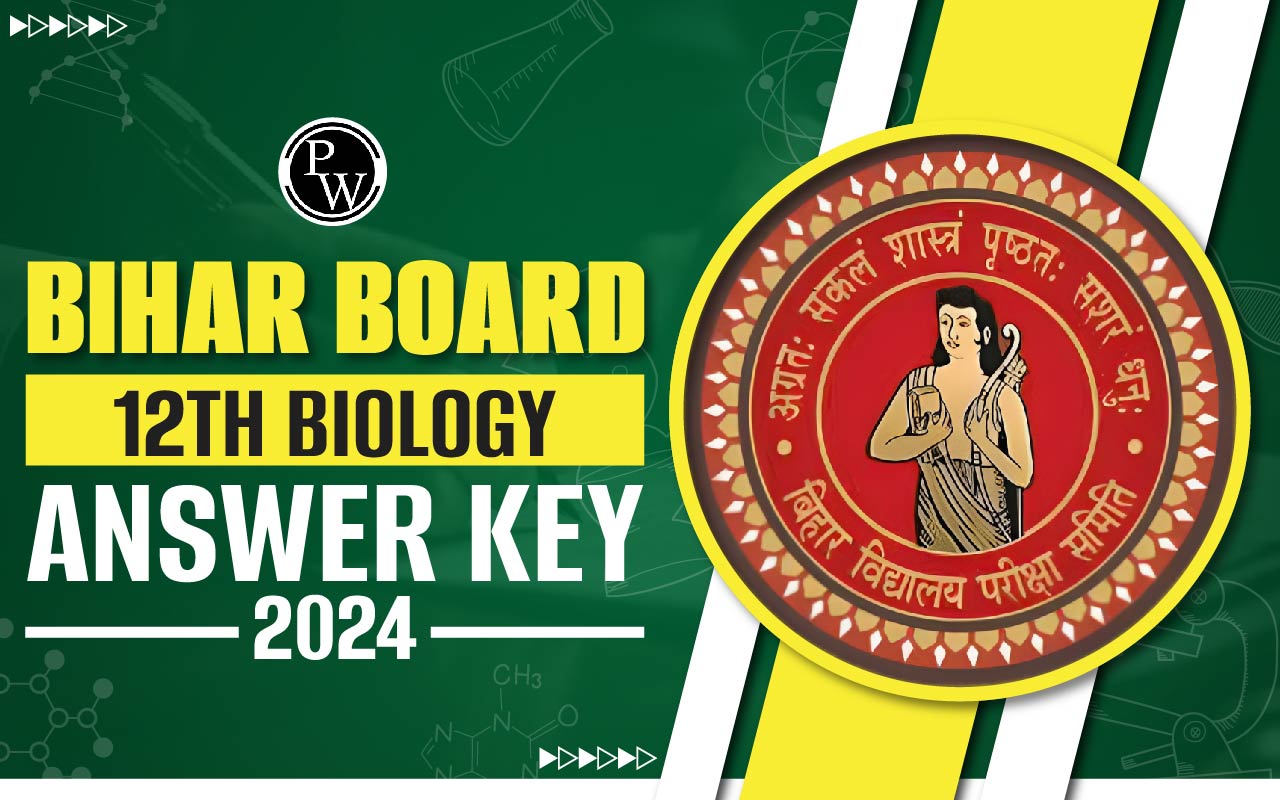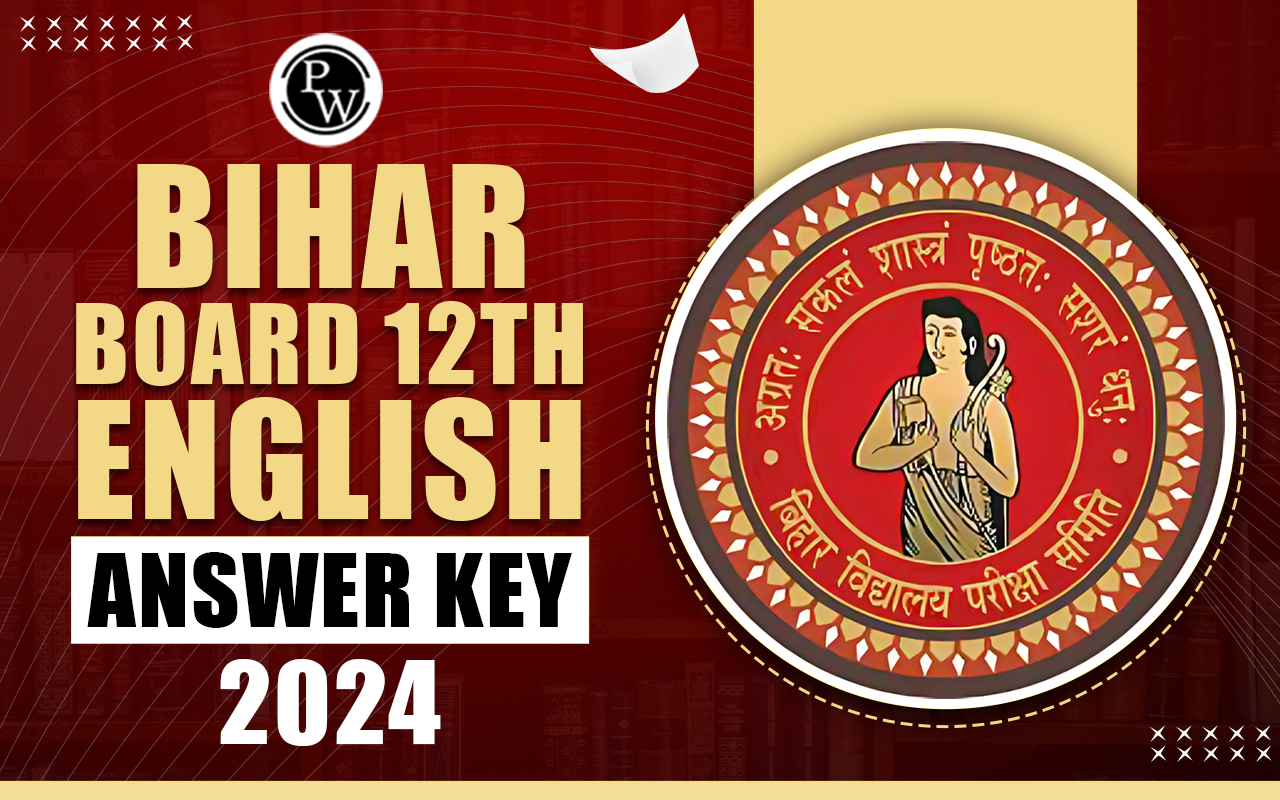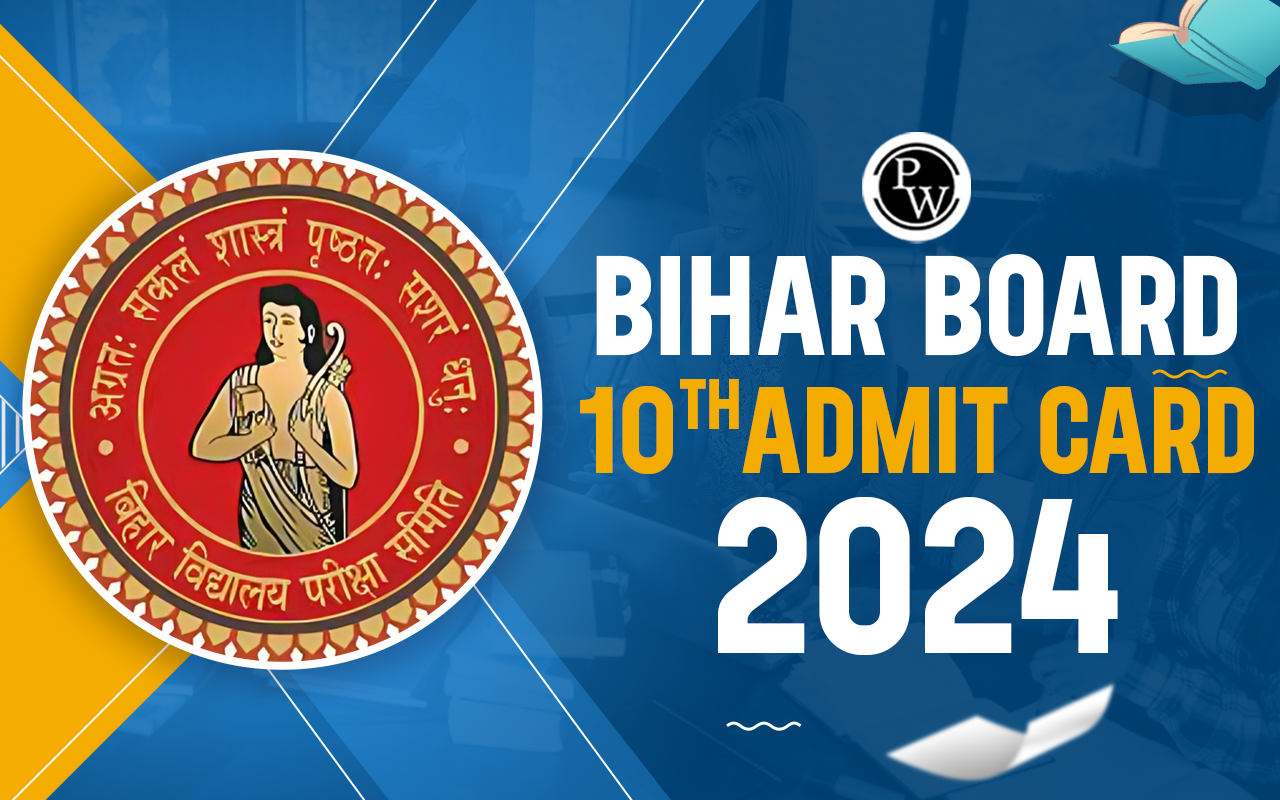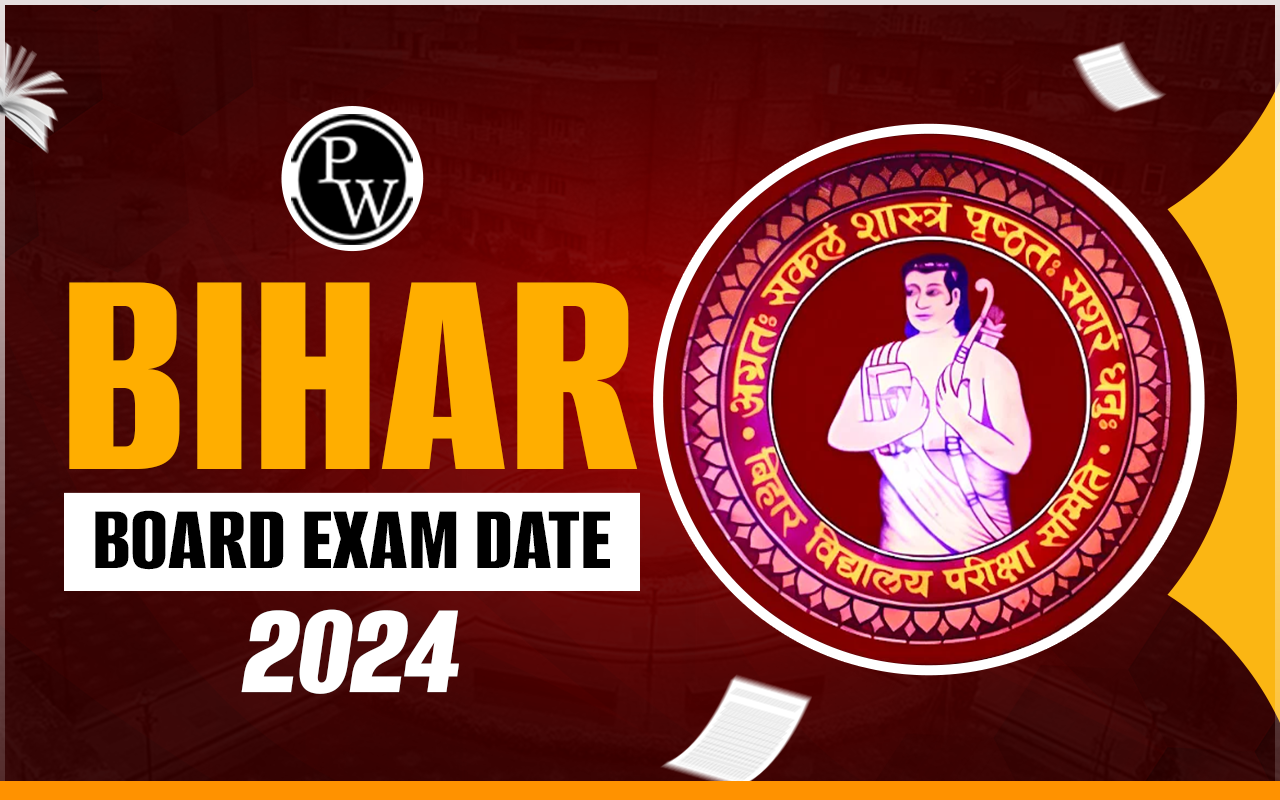
Bihar Board 12th Biology Answer Key 2024: All of the solutions to the questions in the BSEB 12th exams for 2024 are included in the Bihar Board 12th Biology Answer Key 2024. The BSEB 12th Biology paper was administered by the board today, February 1, 2024, from 9:30 a.m. to 12:45 p.m.
The biology paper was divided into two sections: part A had 35 objective questions with a single mark allotted to applicants, and part B had 20 questions with short answers and six questions with extensive answers. Additionally, following the tests today, a variety of tutoring facilities and subject matter specialists will make available the unofficial BSEB class 12 answer key. Students can use the BSEB 12th Biology 2024 answer key to estimate their marks and assess their performance.Bihar Board 10th Exam Date 2024
Bihar Board 12th Biology Answer Key 2024 Overview
The board will shortly make available the Bihar Board 12th Biology Answer Key 2024. The BSEB Biology answer key is available for download by students in PDF format. The candidates will also have the option to object to the answer key, according to the board.Bihar Board 12th English Answer key 2024
When determining their grades, students need to be aware of the grading guidelines established by the Bihar School Examination Board. If students discover errors in their answer key, they have to get in touch with the administration of their institution.BSEB 12th Biology Answer Key 2024 Important Dates
For the most recent information regarding the Bihar Board 12th Biology Answer Key 2024, students can consult the table below. Pen and paper testing will be used for the exams.|
BSEB 12th Biology Answer Key 2024 Important Dates |
|
| Events | Dates |
| BSEB 12th Biology exam dates | 1 Feb 2024 |
| BSEB 12th Biology exam timing | 9:30 a.m. to 12:45 p.m |
| BSEB 12th Biology answer key date (Unofficial) | 1 Feb 2024 |
| BSEB 12th Biology last date of Objection | First week of March 2024 (tentative) |
| BSEB 12th result date | Last week of March 2024 (tentative) |
Bihar Board 12th Biology Answer Key 2024: Paper Pattern
Students have three hours to complete the 70-point biology course. Section A and Section B are the two sections that make up the question paper. The sections were organised according to the subsequent pattern:|
Bihar Board 12th Biology Answer Key 2024: Paper Pattern |
|||
| Section | Number of Questions | Type of Questions | Marks |
| Section A | 70 (35 to be attempted) | Multiple Choice Type | 1 mark each |
| Section B | 20 (10 to be attempted) | Short Answer Type | 2 marks each |
| Section B | 6 (3 to be attempted) | Long Answer Type | 5 marks each |
Bihar Board 12th Biology Question Paper 2024 with Answers
The objective and subjective questions on the actual Bihar Board biology question paper 2024 are separated into two portions, Section A and Section B. The Class 12 Biology Question Paper has a total score of 70 Maks, which is broken down into three sections: 35 Maks for Multiple Choice Questions (MCQs), 20 Maks for Short Type Answers (10\2 Marks), and the remaining 15 Maks for three Long Answer Type Questions (3\5 Marks). Candidates have three hours and fifteen minutes to finish the Bihar Board Biology Question Paper 2024 in its entirety.Bihar Board Biology Question 2024 PDF
Section- A
Q. Which of the following reproduces once in a lifetime?
(A)Pacific salmon fish and bamboo (B) Mammals (C) Birds and mammals (D) Litchi and mangoAnswer:(A) Pacific salmon fish and bamboo
Q. Biodiversity of India is what percentage of the total global species diversity? (A) 2-4% (C) 5% (B)8.1% (D) 9Answer: (B)8.1%
Q. What was the reason for extinction of more than 200 species of Cichlid fish in Lake Victoria? (A) Co-extinction (B) Alien species invasion (C) Overexploitation (D) Habitat lossAnswer: (B) Alien species invasion
Q. Which of the following is not the reason for global warming? (A) Use of fossil fuels (B) Deforestation (C) Population explosion (D) Improvement in the efficiency of energy useAnswer:(D) Improvement in the efficiency of energy use
Q. What was the reason for co-existence of five closely related species – of warblers? (A) Competitive exclusion (B) Resource partitioning (C) Parasitism (D) CommensalismAnswer: (A) Competitive exclusion
Q. Which of the following cells is haploid? (A) Oogonia (B) Primary oocyte (C) Secondary oocyte (D) ZygoteAnswer:(C) Secondary oocyte
Q. After ovulation the ovum is surrounded by a group of cells called (A) Corona radiata (B) Zona pellucida (C) Granulosa cells (D) Theca layerAnswer: (B) Zona pellucida
Q. Which of the following statements is incorrect about temperature? (A) Temperature is the most important environmental factor (B) Temperature decreases from the equator towards the pole (C) Temperature increases with increase in heightAnswer : (C) Temperature increases with increase in height
Q. At which level is natural selection operated to evolve the desired traits ? (A) Individual level (B) Population level (C) Community level (D) Ecosystem levelAnswer:(B) Population level
Q. When the percentage of individuals of pre reproductive, reproductive and post-reproductive phase is in decreasing order in the age pyramid of human population, it shows that population is (A) Expanding (B) Decreasing (C) Stable (D) Unstable Q. What was the reason for co-existence of five closely related species of warblers? (A) Competitive exclusion (B) Resource partitioning (C) Parasitism (D) Commensalism Q.Which of the following reproduces once in a lifetime? (A) Pacific salmon fish and bamboo (B) Mammals (C) Birds and mammals (D) Litchi and mango Q. Which of the following plants produces poisonous cardiac glycoside? (A) Cactus (B) Calotropis (C) Coffee plant (D) Tobacco Q.A new contraceptive pill which is non-steroidal is referred as (A) LNG 20. (B) Progestaset (C) Saheli (D) Lippes loop Q. What is the population growth rate of India as per 2001 census ? (A) 1-1% (B) 3-7% (C) Approximately 2 (D) 3%Answer: C
Q. Which of the following IUDs is hormone releasing? (A) Multiload 375 (B) LNG-20 (C) Lippes loop (D) Cu-TBSEB 12th Biology Question Paper 2024 with Answer key
1. What is the meaning of charging of t-RNA?
(A) Linking of amino acid with cognate t-RNA (B) Attachment of t-RNA with ribosome (C) Translation of RNA (D) Modification of RNAAnswer: (B) Attachment of t-RNA with ribosome
2. Which of the following is not a termination codon? (A) UAG (B) UGA (C) AUG (D) UAAAnswer: (C) AUG
3. Which of the following blood cells is known as PMNL? (A) Lymphocyte (B) Monocyte (C) Neutrophil (D) PlateletsAnswer: (C) Neutrophil
4. Which of the following is abundantly found in colostrum? (A) IgA (B) IgG (C) IgM (D) IgDAnswer: (A) IgA
5. Which of the following is a non-infectious disease? (A) AIDS (B) Malaria (C) Cancer (D) TyphoidAnswer: (C) Cancer
Bihar Board 12th Biology Important MCQs with Answers
Instructions: The following Questions have four options, out of which only one is correct. Answer the following Questions- 1. According to IUCN, how many animal and plant species occur on earth? (A) Slightly more than 1.5 million (B) 7 million (C) 20-25 million (D) 3 millionAnswer: (A) Slightly more than 1.5 million
2. Who propounded Competitive Exclusion Principle? (A) Mac Arthur (B) Gause (C) Connell (D) DarwinAnswer: (B) Gause
3. Organisms that can tolerate a variable wide range of temperatures are called as – (A) Eurythermal (B) Stenothermal (C) Cold blooded (D) Warm bloodedAnswer: (A) Eurythermal
4. The name of M. S. Swaminathan is associated with which of the following fields ? (A) Ecology (B) Biotechnology (C) Green revolution (D) Milk productionAnswer: (C) Green revolution
5. Golden rice is rich in which of the following ? (A) Vitamin B1 (B) Vitamin B2 (C) Vitamin C (D) Vitamin AAnswer: (D) Vitamin A
6. Which of the following micro-organisms is utilized to prepare “SwissCheese” ? (A) Penicillium roqueforti (B) Propionibacterium sharmanii (C) Yeast (D) Lactic acid bacteriaAnswer: (B) Propionibacterium sharmanii
7. In which of the following plants adventitious buds develop from leaves? (A) Ginger (B) Banana (C) Dahlia (D) BryophyllumAnswer: (D) Bryophyllum
8. Sporozoite is the infective stage of which of the following diseases? (A) Malaria (B) Typhoid (C) AIDS (D) PneumoniaAnswer: (A) Malaria
9. In which of the following XO – Male type of sex determination is observed ? (A) Grasshopper (B) Honey bee (C) Human (D) BirdsAnswer: (A) Grasshopper
10. In which of the following organism meiosis does not occur during gamete formation? (A) Haploid organism (B) Diploid organism (C) Human (D) ChimpanzeeAnswer: (B) Diploid organism
11. Who propounded Central Dogma? (A) Watson (B) Crick (C) Wilkins (D) R. FranklinAnswer: (B) Crick
12. In Lac operon where does repressor protein bind? (A) Operator (B) Promoter (C) Structural gene (D) Regulator geneAnswer: (A) Operator
13. In seeds of pepper, remnant of nucellus persists, which is called as –. (A) Chalazosperm (B) Endosperm (C) Pseudo embryo sac (D) PerispermAnswer:(D) Perisperm
14. If production of seeds occurs without fertilization, it is called as — (A) Amphimixis (B) Apomixis (C) Parthenocarpy (D) ParthenogenesisAnswer: (B) Apomixis
15. RNA polymerase III is not responsible for synthesis of which of the following? (A) hn RNA (B) t RNA (C) 5 sr RNA (D) sn RNAAnswer: (C) 5 sr RNA
16. Pollen grains are well preserved as fossils because —. (A) Pollen grain has a wall (B) Wall has exine of sporopollenin (C) Wall has intine of pectocellulose (D) Wall has cellulose Answer: 17. Backbone of polynucleotide chains of DNA is composed of which of the following ? (A) Sugar-phosphate-base (B) Phosphate-base (C) Sugar-phosphate (D) Stack of paired basesAnswer: (C) Sugar-phosphate
18. Which one is Genotypic ratio of F2 generation of monohybrid cross conducted by Mendel? (A) 3 : 1 (B) 1 : 2 :1 (C) 9 : 3 : 3 : 1 (D) 1 : 1Answer: (B) 1 : 2 :1
19. Which of the following secretes gonadotropin releasing hormone? (A) Ovary (B) Testis (C) Posterior pituitary gland (D) HypothalamusAnswer: (D) Hypothalamus
20. After fertilization, wall of ovary develops into which structure? (A) Epicarp (B) Seed (C) Mesocarp (D) PericarpAnswer: (D) Pericarp
Steps to Raise an Objection Against BSEB 2024 Biology Answer Key
Following a successful exam, the board will make available the 2024 BSEB 12th answer keys. Additionally, the candidates' objection window will be made available on the official website by the board. The following are some actions you can take to voice your objection:Step 1: Students can go to the official website.
Step 2: Go to the homepage, select the Biology topic, and then select a certain quantity of Bihar Board Class 12 Answer Key 2024.
Step 3: Students have to choose the type of issue and question number.
Step 4: Students should explain their choices for the right responses.
Step 5: Students have the option to file an objection by clicking the "save" button.
Things to do After BSEB 12th Biology Answer Key 2024
The Bihar Board 12th Biology Answer Key 2024 is available for students to download in PDF format. The actions to take are listed below after downloading the answer keys.- Students would have to wait for the 2024 BSEB 12th result and estimate their marks. On the official website, the Bihar Board 12th Result 2024 will be made available.
- Students can check the class 12 Bihar board result by logging in with the required credentials.
- If students receive the necessary passing grades, they can apply to several colleges and courses.
- In the event that they do not receive passing grades, students are required to apply for the additional exams.
- In addition, candidates who are dissatisfied with their scores will have the option of reevaluating with the board.
Bihar Board 12th Biology Answer Key 2024 FAQs
What is the weightage for BSEB Biology Class 12?
How to pass class 12 Bihar Board?
How to score full marks in class 12 Biology?




